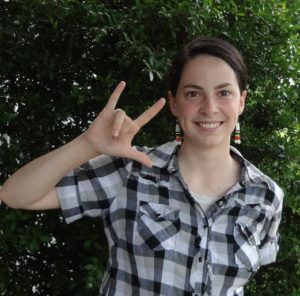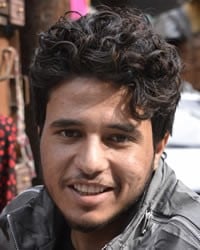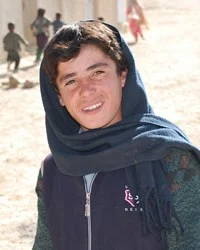Bibleless Nations

The Larestani people group of Southwestern Iran has a population of 115,000 Sunni Muslims. The Larestani are surrounded by Shi’ite Muslims, so religious tensions are often very high. The Larestani are farmers and shepherds; but as they are completely dependent on the little rainfall the region receives, are very poor. As a direct result of the difficulty in farming and shepherding, many Larestani have left their homeland and moved to other countries around the world for work.
The Larestani speak Lari, which is closely related to Farsi. However, the languages are different enough that any materials written in Farsi do not adequately relay the gospel message to the hearts of the Larestani. A heart language is an essential part of culture and the language best understood.
There are no scriptural resources in Lari. There are no missionaries working with the Larestani. There is no Christian witness of any kind. Iran is utterly intolerant of and hostile towards all forms of Christian influence, and the Larestani are in complete spiritual darkness. Many believe that the Larestani are of Jewish decent, but the light from the truth of the one true religion has been stamped out by Islam. They are in desperate need of the gospel message.
Please pray that the Lord will send someone to the Larestani with the light of the gospel and break the satanic stronghold.
Winter 2017-18
The Lembak, or Cul (population 231,000), live primarily on the island of Sumatra in Indonesia. They are farmers whose main crop is rice, though some do farm and sell coffee and rubber. Families are close-knit; two family members accompany anyone leaving Sumatra to receive further training or work experience. When they finish their training, all three family members return.
They call themselves “Sindang Kelingi” or “Lembak Sindang Merdeka” which means “free.” This is ironic as the Lembak people are largely Muslim, a religion very different from their traditional animistic ethnic religion. They are still in bondage to sin and are plagued with demonic activity. The Lembak people call on shamans to heal sickness and cast out demons. Sadly, these people have embraced a false religion that offers no real freedom from spiritual darkness.
These hard-working people need the freedom that comes from the gospel of Jesus Christ. However, there is no Bible translation of any kind. There are no missionaries to teach what the Bible says about the Lord and Savior Jesus Christ, the only One who can truly deliver them from their sin and end the demonic possession and oppression that plagues them. Please pray for the Lord of Harvest to send missionaries to the Lembak people and to break the bonds of Islam and animism, allowing them to hear the gospel. Ask God to prepare the Lembaks’ hearts to receive the truth.
Fall 2017
The Moor (world-wide population 4,235,100) are originally from North Africa. They are proud of their Arabic ancestry and retain its Islamic influence which varies between the terrorist Quidari and the more peaceful Jajani. Their language is Hassaniya Arabic. They have no Scripture or known missionaries.
In 711 AD, the Moor invaded and conquered Spain. They contributed so much knowledge during their several hundred year reign that Europe made great strides in education and the sciences. The Moor were driven from Spain during the Inquisition and scattered throughout North Africa and Europe. Today, they have no land of their own but live in eleven different countries.
There are four class divisions within a Moor community: upper class black, upper class white, lower class black, and lower class white. These classes have nothing to do with color or race. The lower classes are simply poor and under slavery to the upper classes. However, if a lower class marries into an upper class, the lower class is raised to the higher status.
Traditionally, Moors are nomadic and live in rectangular tents made of woven wool. Depending on where they live, Moors are also farmers, tradesmen, or traders.
Please pray for someone to preach Christ to the Moor. Pray that they will be receptive. Also pray that those receiving Christ will have the boldness to share Him with others.
Winter 2016-17

An estimated four to five million Luri people live in the Zagros Mountains in the southwestern provinces of Iran. Making up about 7% of Iran’s population, these ancient nomads are believed to be indigenous to the area, descended from ancient Persians. History reports that Luri ancestors were the Elamites and Kassites, dating back to 3000 B.C. It was the Kassite dynasty that defeated ancient Babylonia and dominated Mesopotamia for 576 years. Could this be the fall of the Babylonian empire under Nebuchadnezzar?
The Luri are divided into Northern and Southern provinces with southern tribes speaking “Laki,” a form of Kurdish, and northern tribes speaking “Luri,” the closest living language to Old Persian. Neither language has the Bible. Men are often bilingual; while the women, restricted to their tribal lands, often speak only their tribal language. The literacy rate is very low with only 48% of the Luri reading and writing.
The Luri profess Shia Muslim, but practice very individualistic and diverse forms of Islam, including the mystic Iranian religion of Yaresan. It teaches that man, aware of the outer world but ruled by the inner world, goes through as many as 1,001 reincarnations while his soul seeks perfection. A famous Yarsani saying is “Men! Do not fear the punishment of death! The death of man is like the dive which the duck makes.” They need to know that an unsaved man or woman dives into hell. And they need to know the One who can take them to heaven.
Fall 2016
The Amazon Basin contains the largest tropical rainforest in the world, covering an area almost the size of the continental United States. Most of the basin lies within Brazil, but it also encompasses parts of Bolivia, Colombia, Ecuador, Guyana, Peru, and Venezuela. It is home to an estimated twenty-six million people, including isolated and even uncontacted tribes. Some have denied the existence of as yet uncontacted tribes, but it has been documented by eye witness reports and by aerial video footage.
These uncontacted tribes are resistant and hostile to anyone approaching them. They and their land are currently threatened by mining companies, oil companies, and armed illegal loggers. Any contact with outsiders poses a threat of introducing a disease that can easily wipe out half the tribe; even the common cold is a real danger. For these reasons, the Brazilian government protects indigenous people and their land from intrusion.
How can these people for whom Christ died be reached with God’s message? And if a way to get to them is found, how can the spread of disease be prevented? Will we give it up as impossible? Or will we ask the God with whom all things are possible to make a way?
Summer 2016

The 4,127,124 Banjar, Indonesia’s tenth largest ethnic group, makes up 1.7% of the nation’s total population. They live mainly in Southern Kalimantan. There are also over a million Banjar in Malaysia.
The Banjarese language reflects the influence of the Dayaks, the Javanese, and the Malay peoples from whom the Banjar descended. This is a very active language; many of its speakers lack fluency in Indonesian. The script is Arabic.
This people has been dominated by Buddhist, Hindu, and Islamic kingdoms in turn. They have retained Islam which dominates their lives; 99.9% are Muslim. However, some Buddhist and Hindu beliefs and customs still exist.
Though friendly, the Banjar withdraw from others, preferring isolation to anything modern. They live in stilt houses along the rivers and coast. The rice grown in the tidal swamp is a staple. The fish, fruit, and vegetables sold by women from their small boats are also important to their diet. Rubber and pepper are export crops.
There are no Banjar scriptures, and no known missionary activity among them. Pray for God to raise up laborers.
Spring 2016
The official languages of the Republic of Cameroon are French and English. There are also 286 indigenous languages, one of which is Eton with an estimated 127,000 speakers. The Eton people live in the tropical rain forest of the Centre Region. They are subsistence farmers, using the slash and burn method to plant root crops (such as cassava, yam, and macabo), plantain, and groundnuts. Fishing and hunting supplement their diet. Cacao is a cash crop.
Although 74% of the Eton population is considered Christian, only 4% of that number is evangelical. The other 26% practice ethnic religions which are strongly tied to their cultural traditions. There are some local Cameroon tribes who claim a Jewish background. Serge Etele, the Eton man pictured on the right, recalls from his childhood that circumcision was practiced and that they did not eat the animals which are forbidden in the Bible.
Children are growing up speaking Eton, but no scripture has been translated for them. Will you ask God to raise up laborers for that endeavor? A grammar of Eton, published by linguist Mark L. O. Van de Velde in 2008, would be of enormous value to anyone willing to undertake this critical task.
Winter 2015-16
 Every country in the world has a Deaf population, and they are largely unreached. Many of them have their own culture and a sign language distinct for that country. Some deaf people live in isolation and loneliness, while others move to cities and form deaf communities.
Every country in the world has a Deaf population, and they are largely unreached. Many of them have their own culture and a sign language distinct for that country. Some deaf people live in isolation and loneliness, while others move to cities and form deaf communities.
There are actually two Englands— two English languages and two English cultures that co-exist side by side—the hearing and the Deaf. Similarly, there are two Germanies, two Frances, two Spains, two Chinas, two Indias, and two Russias. We are somewhat mindful to go and reach the first language and culture. But do we ever think about reaching the other, the Deaf? The fact is that they NEVER even cross our minds.
Missionaries to the Deaf must be sent to reach this hidden world that most of us have forgotten. Otherwise, we can only claim to reach the nationals of a country. It is impossible for the Deaf to come to us, to become bilingual and bicultural. It is we who are commanded to go to them.
Summer 2015
Isolated and sheltered from the rest of the world by the high peaks of the Caucasus Mountains, the Svan people have preserved and carried on their ancient culture for centuries. Eastern Orthodoxy arrived around the sixth century, yet, it quickly meshed together with primal customs such as sun worship, blood feuds, and animal sacrifices. This syncretized culture still runs deep among the people.
Because life became increasingly easier beyond the mountains, and deadly avalanches killed many in the late 1980s, many Svan have moved from their ancient homes and villages to the low lands of Georgia. Yet, they still hold to their deeply rooted heritage. Many return yearly to their villages for feast days and family rituals. Their unique music is experiencing a revival, though their unwritten language is dying. Those who remain in the mountains retain their old ways of living, their spiritual traditions, and their language.
The Svan look to a future of increasing notoriety, tourism, and progress; yet, a future of gospel witness looks dim. Will you pray that God will send laborers to this people?
Winter 2014-15

There are an estimated 6,934,000 Yemeni Arabs living in the world today. These tribal people are scattered throughout 16 different countries, but the majority of them live in Yemen.
Within their social structure are four classes of people: the wealthy, the tribesmen, the merchants and craftsmen, and the slaves. These classes are very predominant and can be distinguished by the types of clothing worn.
This people group lives in fortress-like villages and elaborately decorated flat-roofed houses. Social life is very important to Arabs, and they share a daily coffee time by sitting on the floor and drinking from cups without handles. Their diet consists of wheat bread and porridge made with boiled meat or chicken.
Almost all of the Yemeni Arabs are Muslims and are quite fanatical in practice. There are less than 5,000 known believers in Yemen and no Bible in their language. Who will reach these precious souls with the Gospel?
You can hear the Yemeni Arab language, Ta’izzi-Adeni, online at: globalrecordings.net/en/language/6429
Fall 2014
For centuries, the Pygmies have been recognized as the oldest inhabitants of the African rainforest. Throughout the forests of Cameroon, Gabon, and Congo, there lives a group of Pygmies known as the Baka. Because they are so remote and widespread, there has been no accurate count of their population.
They are the people of the forest, with a vast knowledge of its animals and plants along with its natural medicines and cures. The women build their traditional, dome-shaped forest huts with branches and leaves. Newer, more solid homes are rectangular with mud walls. Baka family ties are very strong, and traditions and history are passed down from one generation to another by word of mouth.
Since the early 1800’s, these people have been claimed to be Catholic, but to this day they practice their traditional animist religions. They have no Scripture in their unwritten language.
Summer 2014

The Aimaq Char of Afghanistan is a people group comprised of four different tribes: Taimani, Firozkohi, Timuri, and Jamshidi. It is estimated that 250 subtribes exist within these. The population of this group is 334,000 and 148,000 of them live in Afghanistan. Their primary language is Aimaq, but Farsi is spoken in the schools.
Foods commonly eaten are thick wheat bread, chickpeas, rice, potatoes, and other garden vegetables. Chicken, eggs, or lamb are often eaten at festivals. The women dress in bright, vibrant colors, but outside their homes they wear dark head-to-toe coverings. Men wear turbans along with a type of cloak that hangs from the shoulders. The people measure wealth by the amount of animals owned.
This people group does not have a Bible in their language. By law they are forced to profess and practice Sunni Islam. Because they trace their lineage back to Abraham, many of the Old Testament stories are somewhat known to the people. However, there is no missionary work nor outreach to this group of people. God is calling. Who will go?
Spring 2014